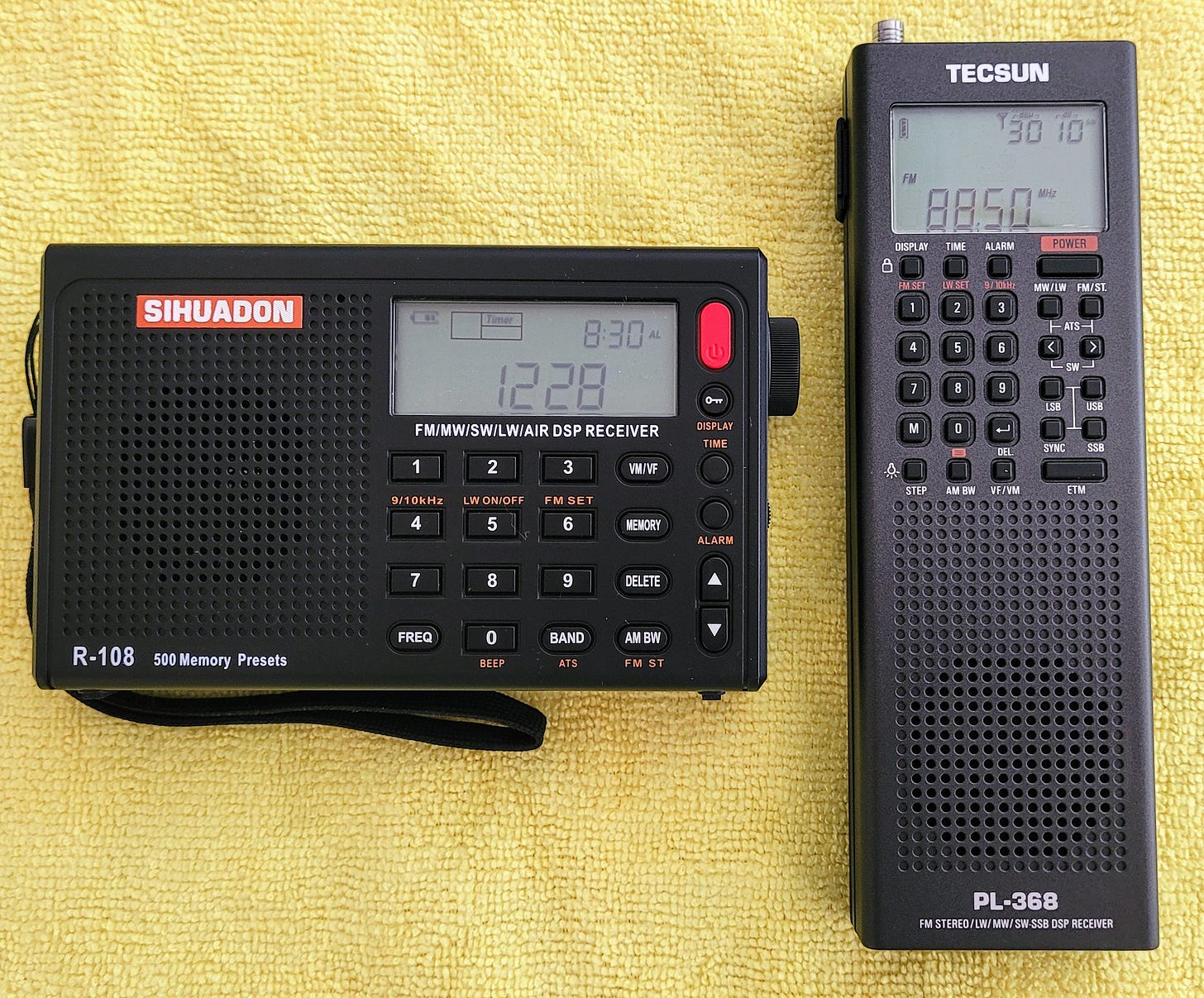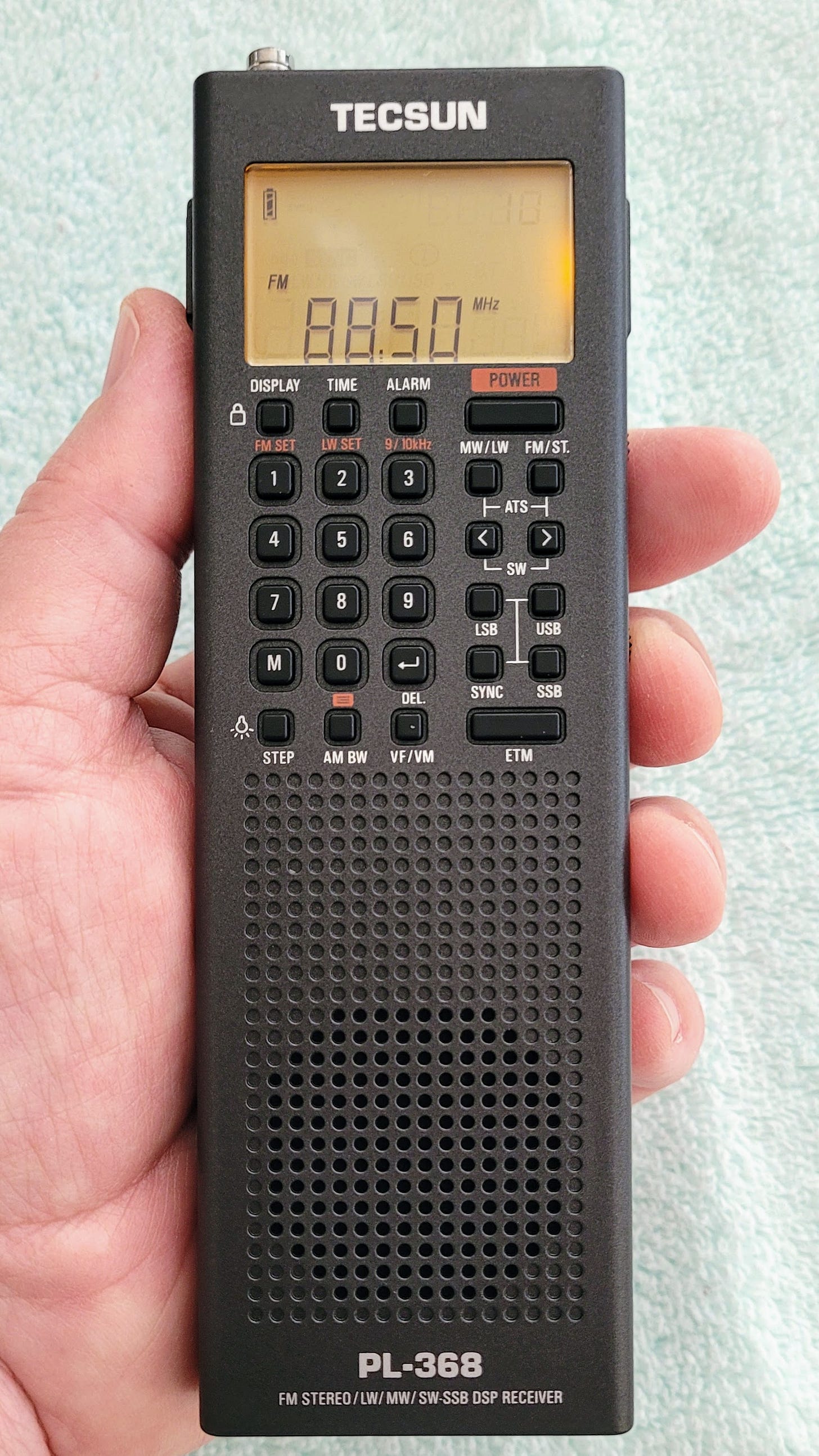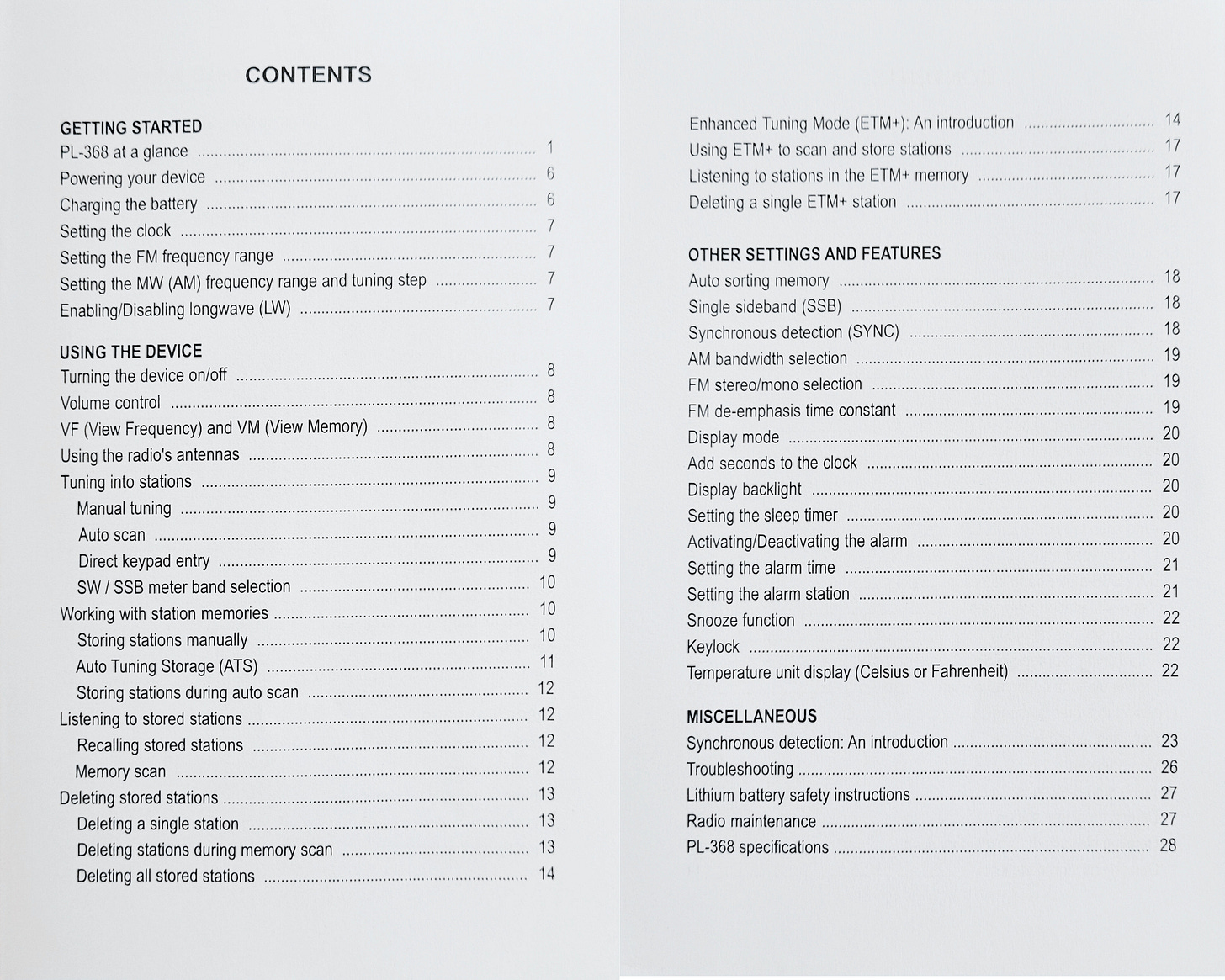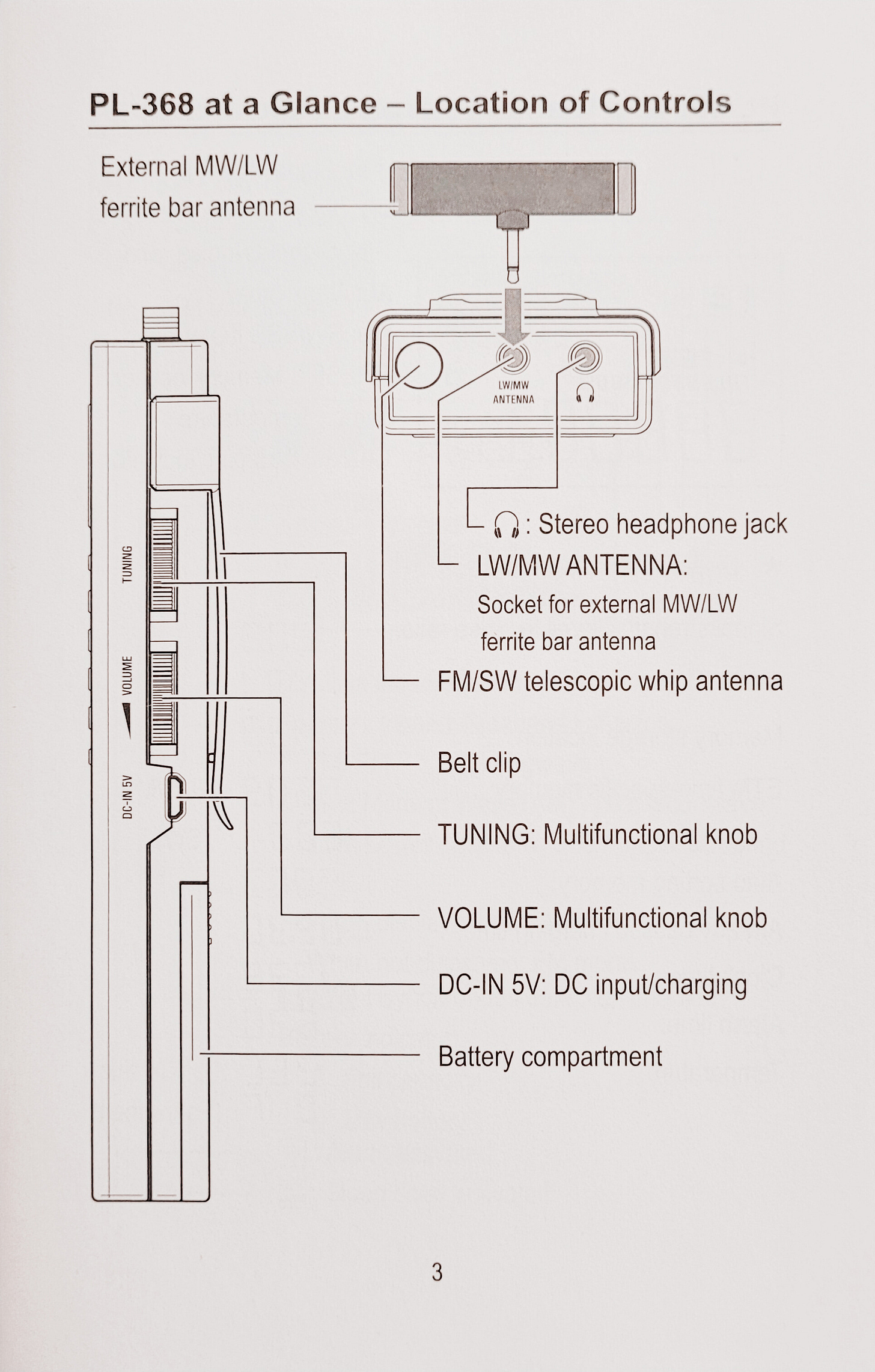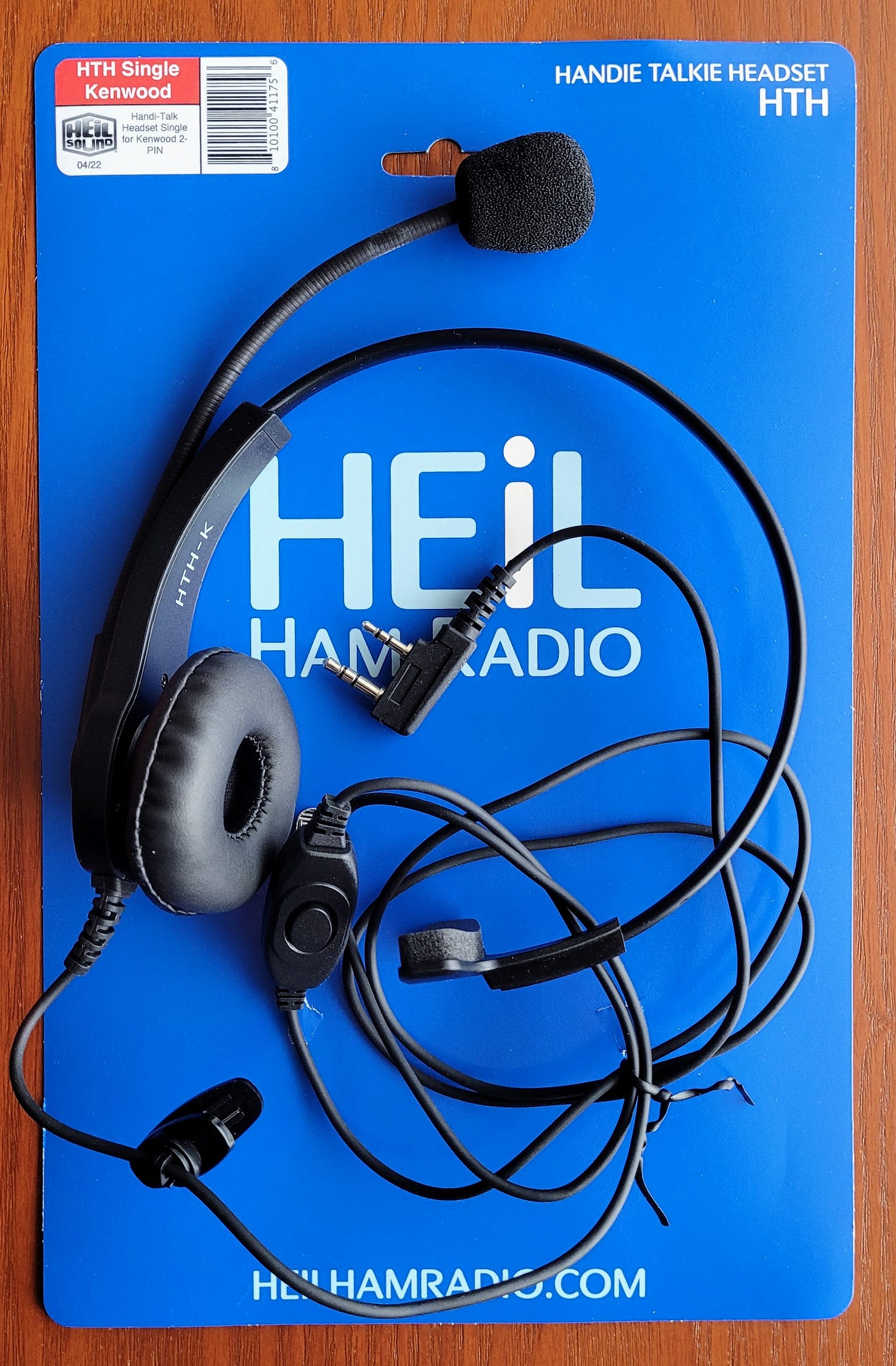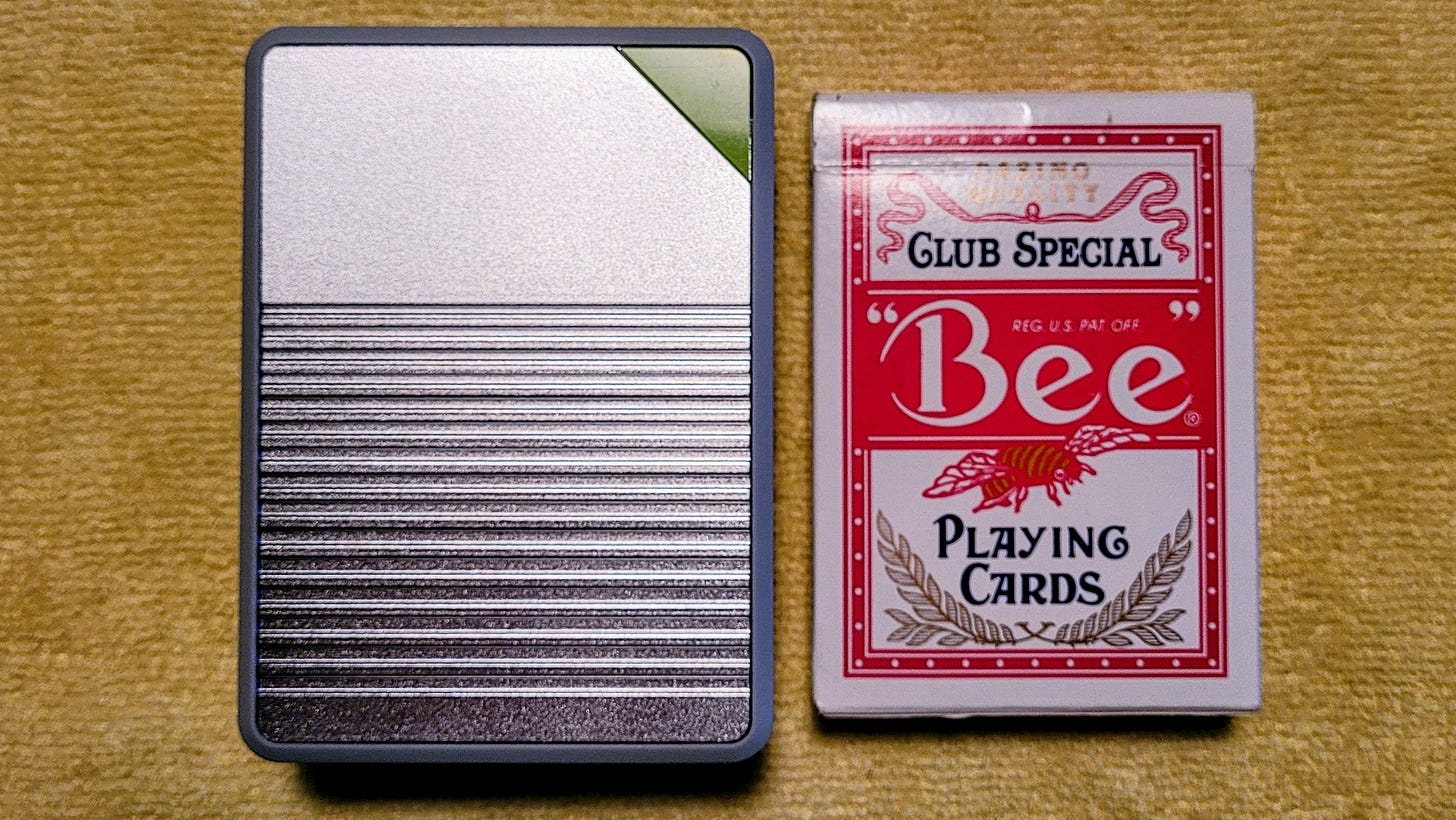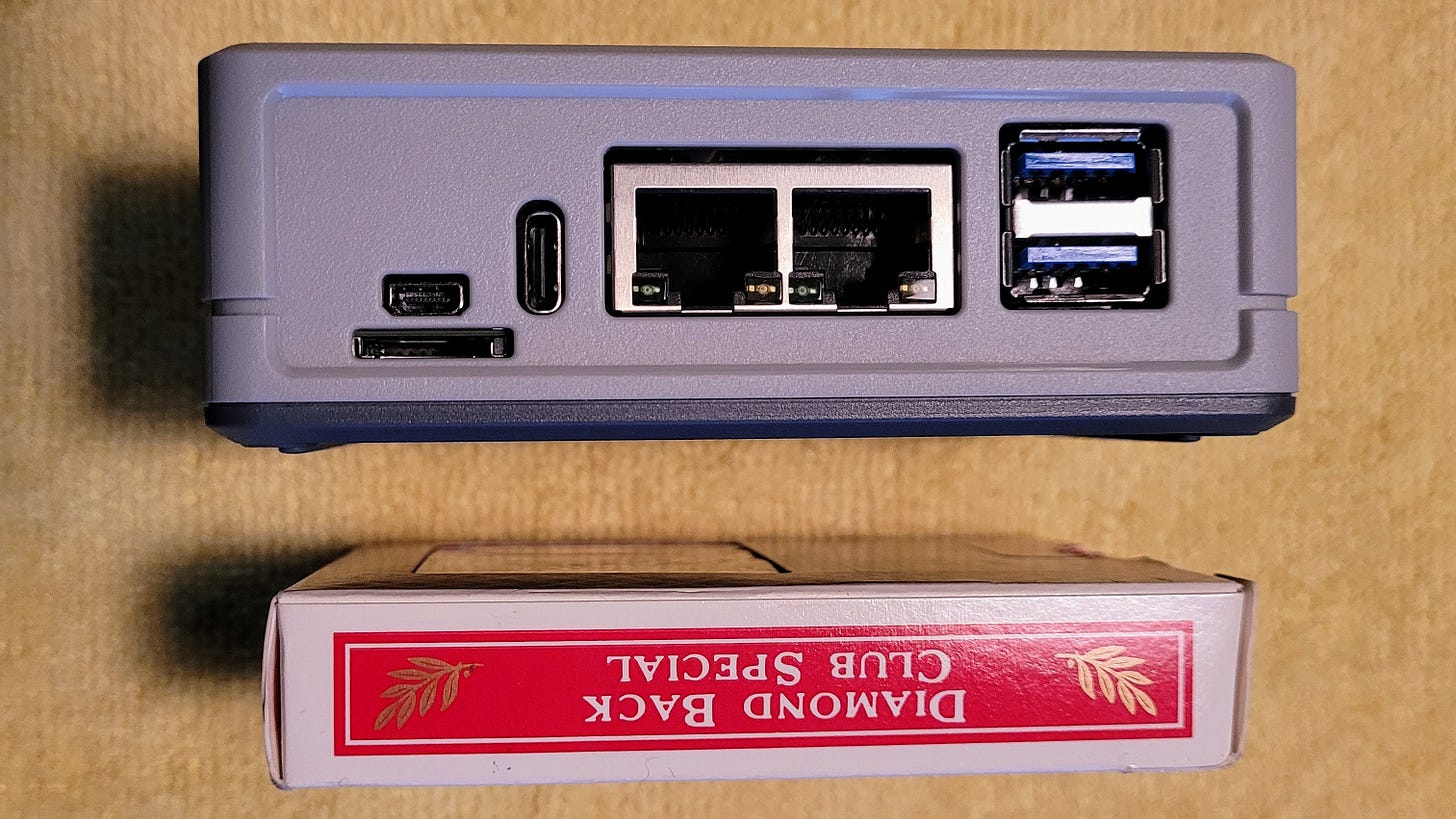Random Wire 138: Zero Retries Digital Conference registration, new Tecsun receiver, AllScan UCI90 interface, and trying the reRouter as an AllStar node
July 5, 2025: Random Wire Review issue 138
Clarification about Random Wire issue 37
I may have created confusion by describing my full-duplex personal AllStar node as a repeater. A clarification was added to Random Wire 137 following publication last week. If this is a concern for you, please do review the clarification. Thank you to David Gleason NR9V (https://allscan.info) for his help in understanding the difference between a personal node and a radio repeater. This is a great example of learning together.
Zero Retries Digital Conference: Registration is Open
The registration page for the first Zero Retries Digital Conference is now available at https://lp.constantcontactpages.com/ev/reg/7852x9m.
This is an exciting opportunity to learn more about digital communications in amateur radio and to meet other hams interested in this aspect of amateur radio. Here’s the opening section from that link:
This inaugural conference will showcase technological innovations in Amateur Radio that is usually covered in Zero Retries Newsletter. Planned presentations and demonstrations include but not limited to:
IP 400 Networking Project
M17 Digital Voice/Data system
MMDVM-TNC data system
ARDEN, HAMWAN and other Amateur Radio microwave
See website for detailed info: www.zeroretries.org/p/conference
Registration deadline is Friday, 9/5/2025. Mail-in registrations must be postmarked by 8/27/25. After these dates, registration will be at the door only and WILL NOT include meals.
Location: Edward Hansen Conference Center, 2000 Hewitt Avenue, Everett, WA 98201
Date and time: Sat, Sep 13, 2025 7:30 AM PT
Organizer: Tina Stroh KD7WSF, (206) 618-3511, tina@zeroretries.net
Shortwave listening: Tecsun Digital PL368
This story starts with an equipment failure. My SIHUADON R108 shortwave receiver no longer charges the lithium ion battery inside. I bought the SIHUADON R108 radio in January 2025 so it was a surprise to find it malfunctioning this week.
This particular radio is part of the XHDATA family of radios. There is a 30-day return/refund policy in place, but no clear warranty is stated. I’m engaged now in the awkward process of contacting the seller through Amazon.
What’s the problem? The battery will not charge in the radio as it is supposed to. I substituted a known good battery and it will not charge in the radio, either.
UPDATE: The resolution offered by the vendor doesn’t look worthwhile to me. The radio does work, it just doesn’t charge the battery. Here’s the offer from the vendor:
According to your order record, we can provide you with repair services. Our repair service is as follows: 1. Please send the radio back to our head office in China, we can provide repair service for you. 2. We offer you 10 USD for the repair fee to you, you can repair the radio at your local radio store. Please confirm the above. And choose one of them. If you choose to send the radio to us, please contact us and we will provide you with detailed information.
While seeking a resolution to this problem, I decided one workaround would be to buy a charger and a few spare batteries. That choice is cheap enough, but then I wondered what other radios use the same BL-5C lithium-ion battery and found the Tecsun PL368 (in my saved list of radios) uses this battery. While it is certainly a more expensive choice than buying extra batteries and a charger, how could I say no to another radio, and by a brand I like? I bought it:
Tecsun Digital PL368 AM/FM/LW/SW Worldband Radio with Single Side Band Receiver
What follows is general information about the PL368 radio and my impressions. It is not a full-blown review — more like an intro to the PL368.
You can find specs for this radio at https://kaito.us/products/copy-of-tecsun-digital-pl368-am-fm-lw-sw-worldband-radio-with-single-side-band-receiver-black and at https://www.anon-co.com/product/tecsun-pl368-radio-usa.
You might be familiar with the Tecsun PL365 radio which was reviewed at https://swling.com/blog/2017/02/charlie-reviews-the-tecsun-pl-365/. The PL368 is generally considered to have evolved from the PL360 and PL365 radios.
Here’s a YouTube comparison of the Tecsun PL365 and PL368 radios:
Here’s what came in the box:
Since Tecsun is a Kaito brand, I also bought a shortwave antenna by Kaito:
Initial observations
After using the radio for just a few minutes, a few things stood out. First, the sound quality is acceptable with the built-in speaker. It’s a bit tinny, as you might expect from such a small radio, but it is clear and not harsh. I don’t mind it at all.
Second, the included case is a great way to protect the device but there is no room for any of the included accessories. You’ll need a separate bag for those items if you want to bring them along. Also, twice I turned on the radio while pressing the Velcro case flap closed. You might want to remove the battery if you’re going to carry this in a bag or in luggage.
Third, the battery is very easy to take out. Often, the battery door on a small radio can be incredibly difficult to remove. Not so with the PL368. The door slid out easily and the completely exposed battery was easy to pop out.
Fourth, the telescoping aerial is very thin (translation: it is probably fragile) and it is not hinged at the base. If you need to move the antenna to improve reception, you’ll have to move the entire radio. (This is one reason I bought the Kaito antenna.)
Fifth, there is no air band coverage. That’s a detriment in my book but monitoring aircraft may be an acquired taste. I do like keeping track of what is in the air around me.
Size comparison
Let’s look at both radios for size and configuration, then try operating the PL368. I’m including the SIAHUADON simply because it is a more normal-looking radio; showing the PL368 next to it provides helpful context.
While the SIHUADON R108 is a standard-looking radio for this type, the Tecsun PL368 is clearly shaped differently. That is probably the very first thing you noticed about the PL368. The R108 buttons are a more normal size and the print is readable, while the PL368 buttons are tiny and the font size of labels is so small that they are a bit hard for me to read.
Sizes and weights:
SIHUADON R108: 5"L x 1.2"W x 3"H = 18 cubic inches / 5 ounces
TECSUN PL368: 6.38"L x 2.09"W x 1.02"H = 13.6 cubic inches / 130 grams (4.6 ounces)
The R108 feels remarkably light for its size. The PL368 feels light but solid for its size.
Fit in hand
The R108 isn’t really configured for holding in your hand. It has a small flip-out arm on the back so you can stand the radio on your shelf or desk at an angle. The PL368 doesn’t have anything like that — the base is flat and the radio will stand on a level, flat surface. Note, though, that if you have the telescoping aerial extended, the radio is very easy to knock over. (I think I’ll pick up a base made for the PL365 which ought to fit the PL368: https://countycomm.com/collections/radio/products/glow-gp-radio-desk-pod-gen-3.)
The PL368 fits very nicely in my hand. I can operate the panel controls with my thumb and manipulate the volume and tuning controls with my fingertips.
User manual
Table of contents
The user manual is reasonably comprehensive as shown by the table of contents:
Controls
Similarly, the presentation of controls on the device is thorough:
The side controls are simple:
Display indicators
The signal strength indicators are informative. I see them change when I am tuned to a frequency and turn the radio, or raise or lower the telescoping antenna. This provides a helpful visual affirmation that you are getting the best signal possible.
The volume level shows as a number in the upper right corner whenever you change the volume. Here, the volume is set to 13.
Automatic channel finding
The PL368 has a feature I really like: one-button finding and saving of FM frequencies in use. To do this, hold down the FM/ST button for a few seconds. The radio will scan the entire band.
When I did this, the radio saved 61 frequencies. Most of those had readable audio that ranged from marginal to very clear. Once you run this routine, using the tuning wheel jumps from saved frequency to saved frequency. In other words, instead of having to tune in small steps through the entire band to find stations, the radio has done that work for you. In the audio clip below, the pauses you here are actually saved frequencies that did not have understandable audio.
FM listening audio
But what does the radio sound like with a strong station? It sounds good to me.
Here are several short clips so you can hear the differences between an audio interview, audio introduction to music, advertising copy, and straight-up music. These are unprocessed. I recorded them on my smartphone sitting several inches from the radio speaker. (Apologies to audio engineers who would have probably preferred that I piped the audio directly from the headphone output to a digital recorder.)
Audio interview clip
Audio intro to music clip
Advertising copy clip
Music clip
This clip, with 24 seconds of Tom Petty and the Heartbreakers, also includes some guitar sounds (starting at 18 seconds) that demonstrate good clarity.
What about SSB?
I did try monitoring the amateur radio 20-meter band on Field Day (June 28, 2025) but I didn’t hear anything. I later heard reports on local repeaters that the “bands were dead all day” so perhaps this was not a fair test of the radio.
By the way, the same band scanning that you can do for FM broadcast stations can be done in the ham and shortwave bands. I’m still fiddling with that to see how well it works.
AllScan UCI90 K-1 speaker-mic interface
I’m testing a new device by David Gleason NR9V (https://allscan.info) that interfaces a K-1 speaker-mic to an AllStar node. I also picked up a Raspberry Pi Zero 2W for pairing the RPi with the UCI90 to make a tiny little AllStar node.
The first board I tested was version 0.95. Now the board is at 0.97 and is much more polished in the way the design has been executed.
I also bought a Heil headset made for radios with a K-1 connector. I thought this would make using the UCI90 much easier…and it might, but I haven’t tested it with the UCI90 yet. I did try it with a Retevis handheld radio and a TIDRADIO handheld, and with both radios, the push-to-talk button for the headset generated very loud clicks through the headset. The clicks were annoying and uncomfortable. I think this particular device would benefit from a bit more engineering. A capacitor in the PTT circuit, for example, might soften the noisy microphone activation.
The back of the package shows the differences between the three different versions of this headset.
As soon as I get the UCI90 up and running, I’ll use a couple of different hand microphones with it, along with the Heil headset. My plan is to pair the UCI90 with a small AllStar node using a Raspberry Pi Zero 2W. It looks like this:
Since the RPi Zero 2W has wifi (2.4 GHz only) and Bluetooth onboard, my hope is this package (RPi + UCI90 + handheld speaker mic or the Heil headset) would make for a compact, lightweight node I can toss into a suitcase. I can use my cell phone as a hotspot to connect the node to the internet.
The UCI90 is described at https://allscan.info/products/#radioless:
AllScan UCI90 USB Communications Interface: Ready to plug in to any computer running ASL, DVSwitch, HamVOIP, EchoLink or other PTT communications applications. Provides a K1 Speaker-Mic/Headset jack, 3.5mm Speaker jack, TRS Line Out jack and Mic gain adjustment controls.
A demo video is available at https://allscan.info/video/AllScan%20ANR90%20Radio-less%20AllStar%20Node%20-%20UCI90%20USB%20Communication%20Interface%20Speaker-Mic%20Demo%20RPi5%20ASL.mp4
reRouter as an AllStar node?
So I did a thing: I bought the Seeed Studios reRouter to try as an AllStar node.
reRouter CM4 1432 - Raspberry Pi Based Mini Router, Travel Router, Dual Gigabit Ethernet, OpenWRT OS
(Before you get too far into this, let me acknowledge that it is cheaper and simpler to just use a “normal” Raspberry Pi. I’m experimenting, wanting see how the Compute Module 4 performs.)
The reRouter version I purchased has 4 Gb of RAM and 32 Gb of eMMC storage. This is a Raspberry Pi-flavored device, but instead of the full-blow RPi, it uses the RPi Compute Module 4. It comes with OpenWRT already installed. After I test it with OpenWRT, I plan to install Debian 12 on it.
The reRouter is an elegant-looking compact device:
The available ports are sufficient for running an AllStar node:
You can see that it is USB-C powered, uses a micro-HDMI video interface, and sports a microSD card slot. Two Ethernet ports and two USB 3 ports round out the array of ports available.
If the deck of playing cards doesn’t adequately portray the relative size of the device, I can tell you that it fits easily in one hand.
The body is plastic but the top plate is aluminum, with ribs to help with cooling. The CM4 processor is in contact with thermal compound when the device is assembled, and the thermal compound is on a block of aluminum that is also thermally connected to the ribbed plate.
You can the see relationship of the cooling block to the CM4 module in this view of the reRouter with the base removed. That silver-colored square thing just north of the Raspberry Pi emblem on the board is the CM4.
One drawback to the reRouter is it does not have a real time clock (RTC) on board, but I found a device on Amazon that appears as if it should work (I just ordered one):
Tokyo Devices Clock Dongle a USB Real-Time Clock, Current Time Sync., Battery Backup, TDPC0205
Tokyo Devices has a page that explains how to use their USB RTC: https://en.tokyodevices.com/items/319
If you’d like to learn more about using the Seeed Studios reRouter:
Getting started with reRouter: https://wiki.seeedstudio.com/reRouter_Intro/
Getting started with OpenWRT: https://wiki.seeedstudio.com/Raspberry-OpenWrt-Getting-Started/
reRouter issues and questions are included in the array of product discussions in the Seeed Studios forum: https://forum.seeedstudio.com/c/products/6
Tailscale Funnel to reach remote SIP phone
It’s been an entertaining journey to try to configure a SIP phone to use an Asterisk system located remotely. Most recently, I started exploring Cloudflare tunnels, but I found this to be very confusing.
I went back to trying Tailscale and didn’t understand why my Tailscale Funnel would not work…until I saw on their pricing page that the lowest-tier business plan that I was using did not support Funnel. To use a Tailscale Funnel, I either had to pay more, or use one of the free plans.
I’m not comfortable using Tailscale for business but not paying for it. After conferring with Tailscale support, the solution we landed on was to create a second Tailscale account for my business use, and change my existing instance to a free Personal plan. I’m in the process of doing this, solely so that I can try to use a Tailscale Funnel to connect to a device that doesn’t run Tailscale.
If I can get this to work, it will also solve a problem a radio friend in Italy is having. My fingers are crossed.
Updates
AllStar full-duplex broken but now fixed
Full duplex in AllStarLink 3 was not working correctly after a recent update. After a few attempts to resolve it, this has been corrected.
Please update your systems using the Cockpit web console or command line at your convenience.
Allmon3 security notice
If you have Allmon3 installed on your AllStar node, please read the security notice at: https://community.allstarlink.org/t/allmon3-security-notice/23432. The AllStar3 update released on June 29, 2025 addresses the issue described in the security notice.
Closing
My work computer died this week. It was spawning a hardware fault and getting hot. Periodically, it would simply shut down. The hardware fault in the error log was not very specific, suggesting the video card…but it doesn’t have a separate video card.
I redid the thermal paste on the CPU, in case I had not done a good job the last time I replaced the thermal paste. I also pulled the CPU to make sure the pins looked good and found a small hair under the CPU. I figured I had done some good work on it, so it was very much a surprise to hear a click (almost a pop, but not quite) about 20 minutes after booting it up. Now it won’t power up at all.
I’m going to reseat the CPU, and then do the “disconnect the CMOS battery for a bit” trick. However, this may be a case of bent pins where the CPU seats to the motherboard. I’m not sure the old PC is worth fixing, but I like it, so I may hit eBay for a replacement motherboard. There is no shortage of them and the prices are low. I’d like to return this platform to service.
I also spun up my M17 handheld this past week by reconfiguring my WPSD hotspot for M17. I didn’t make any contacts but I was able to confirm that my signal is reaching my M17-PNW reflector.
73 to all. Remember to touch a radio every day!








